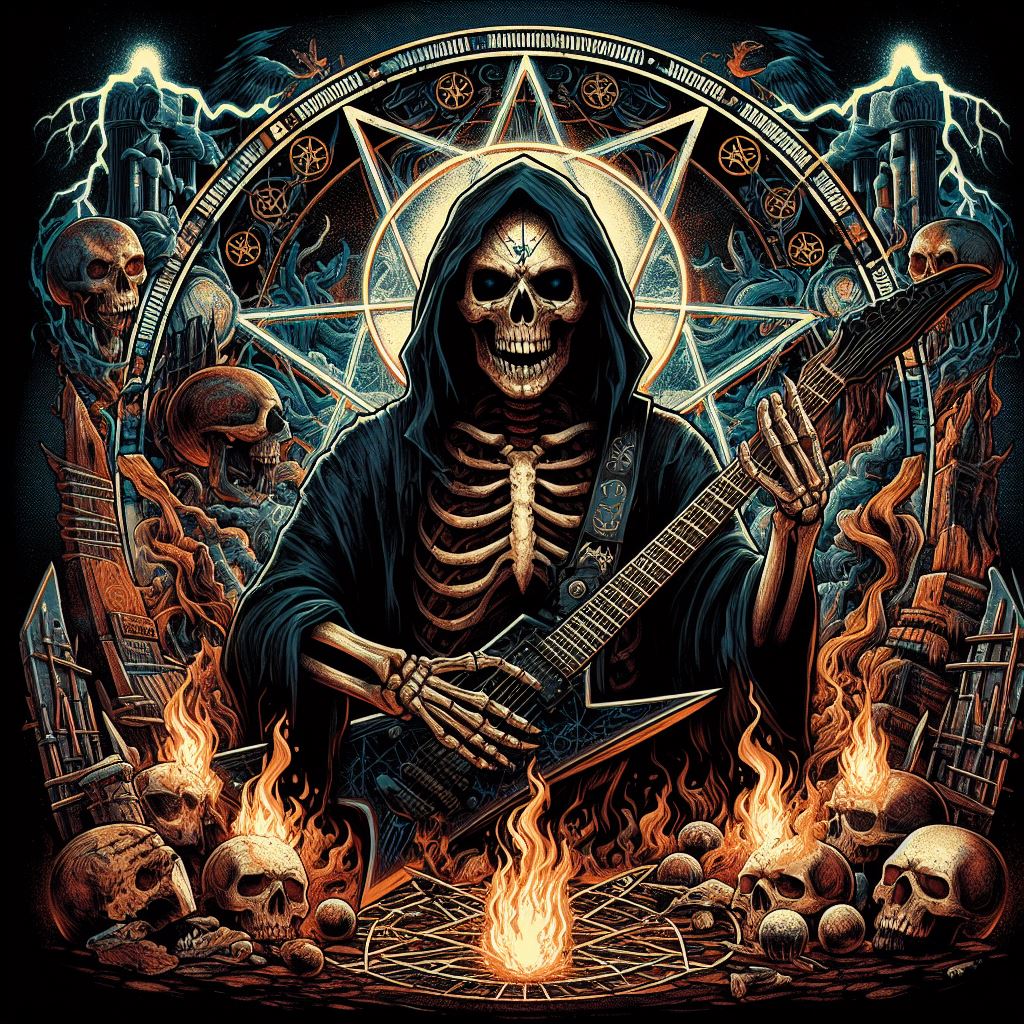In the blistering cauldron of extreme metal, where fire-breathing guitars and thunderous drums reign supreme, Sammath emerges as a relentless force, a titan amidst the chaos. Formed in the Netherlands in 1994 by guitarist and vocalist Jan Kruitwagen, this blackened death metal entity has carved its name into the annals of metal history with a ferocity that few can match. Let’s embark on a journey through the tumultuous history of Sammath, a band that has relentlessly pushed the boundaries of sonic brutality.
Sammath’s origins can be traced back to Kruitwagen’s desire to create music that encapsulated the raw aggression and unrelenting fury of extreme metal. Drawing inspiration from bands like Bathory, Celtic Frost, and Darkthrone, Kruitwagen forged a sound that merged the relentless assault of black metal with the guttural brutality of death metal. Joined by drummer Koos Bos and bassist Ruud Nillesen, Sammath unleashed their debut album, “Strijd,” upon an unsuspecting world in 1999.
“Strijd” was a revelation, a sonic maelstrom that announced Sammath’s arrival with earth-shattering force. With its razor-sharp riffs, frenetic drumming, and Kruitwagen’s venomous vocals, the album was a manifesto of unbridled aggression. Tracks like “Glorious Corpse Disposal” and “Strijd” showcased the band’s ability to marry blistering speed with bone-crushing heaviness, earning them a dedicated following within the underground metal scene.
Buoyed by the success of their debut, Sammath wasted no time in unleashing their sophomore effort, “Verwoesting/Devastation,” in 2002. If “Strijd” was a declaration of war, then “Verwoesting/Devastation” was the full-scale assault that followed. The album saw Sammath doubling down on their sonic onslaught, delivering a relentless barrage of blast beats, tremolo-picked riffs, and throat-shredding vocals. Tracks like “De Glorie van het Slagveld” and “Raadhuisplas Verminking” further cemented Sammath’s reputation as one of the most uncompromising bands in the underground metal scene.
Despite facing numerous lineup changes over the years, including the departure of founding member Ruud Nillesen, Sammath continued to evolve and refine their sound with each subsequent release. Albums like “Dodengang” (2006) and “Triumph of Hatred” (2014) showcased the band’s willingness to experiment with dynamics and song structures while never compromising on their core ethos of sonic brutality.
Throughout their career, Sammath has remained steadfastly independent, eschewing the trappings of mainstream success in favor of staying true to their underground roots. This uncompromising attitude has earned them a cult following among fans of extreme metal, who revere the band for their unrelenting dedication to their craft.
In an era where trends come and go with dizzying speed, Sammath stands as a bastion of integrity and defiance, a testament to the enduring power of extreme metal in all its savage glory. As they continue to unleash their sonic fury upon the world, one thing is certain: the legacy of Sammath will endure as a beacon of uncompromising metal madness for generations to come.

Leave a Reply
You must be logged in to post a comment.